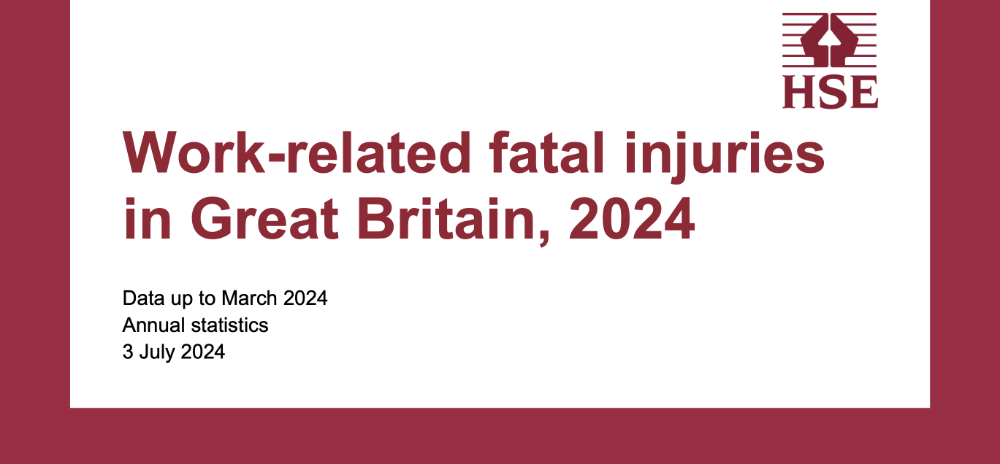RIDDOR and the provisional statistics for 2023 / 2024
Contents |
[edit] The RIDDOR requirements
The Reporting of Injuries, Diseases and Dangerous Occurrences Regulations 2013 (RIDDOR) introduced a legal requirement for responsible persons (employers, the self-employed and individuals in control of work premises) to notify and keep records of specified workplace incidents. This includes certain workplace accidents, occupational diseases and certain ‘dangerous occurrences’ (including near miss accidents). In addition, registered gas fitters are required to report poor and dangerous gas installations.
A ‘responsible person’ must notify the relevant enforcing authority (Health and Safety Executive (HSE), local authorities and the Office for Rail Regulation (ORR)) about deaths, injuries, occupational diseases and dangerous occurrences. The information gathered is used to assist in identifying where and how risks arose and to prevent re-occurrence.
Accurate records of any RIDDOR incidents must be maintained to assist in ensuring that health and safety is managed appropriately. In addition to RIDDOR incidents, any incident resulting in a worker being away from work or incapacitated for more than three consecutive days must be recorded. The records must include details regarding the incident or disease, personal details of the individual(s) involved, time and place of the event and the date and method of reporting. Records must be kept for at least three years from the date on which they were made.
Records must be submitted by the responsible person via an online reporting system from the RIDDOR report page on the HSE website. The appropriate form should be completed which will be submitted to the database and a copy emailed as a record for the responsible person. Fatalities and major injuries can be reported by phone to the HSE. A report must be received within 10 days of the incident or within 15 days for accidents resulting in the over seven-day incapacitation of a worker.
[edit] RIDDOR provisional statistics for 2023/2024
The Reporting of Injuries, Diseases and Dangerous Occurrences Regulations (RIDDOR) figures for 2023/24 are published annually first as provisional statistics that will be finalised in July 2025.
In 2023/24 provisional figures show that 138 workers were killed in work-related accidents (RIDDOR) and that 87 members of the public were killed in work-related accidents during the same period. This excludes deaths due to work-related accidents to ‘patients and service users’ in the healthcare and adult social care sectors in England reportable under RIDDOR.
Over 50% of the total number of 138 workers killed in work-related accidents in 2023/2024 were attributed to the construction sector, and of that total exactly 50% of these fatal accidents were recorded as fall from height. During the period 2013/2014 to 2023/2024 the highest number of work related deaths occurred in 2018 with 149 deaths, whilst the lowest figures were in 2019 with 113 deaths (noting that the pandemic likely impacted figures).
HSE state that 'Despite long term reductions in the number of workers killed by work activities, each year such cases continue, with 138 such deaths in 2023/24. This number compares with 236 twenty years ago (2003/04) and 495 in 1981 (prior to 1981 only fatal injury numbers to employees were reported to enforcing authorities)....the 138 worker deaths in 2023/24 represents an increase of 2 from the previous year. In statistical terms the number of fatalities in 2023/24 is broadly in line with the pre-pandemic level (annual average of 142 deaths per year 2016/17-2018/19).
[edit] Further information and guidance from HSE
HSE provides a wide range of RIDDOR related resources and explanations covering; reportable incidents, types of incidents that must be reported and exemptions, how to make a RIDDOR report, reporting online or by telephone, the types of records that need to be kept aswell as a resources section. For further information see article Reporting accidents and injuries on construction sites RIDDOR or visit the HSE website page here as well as a downloadable pdf.
[edit] Related articles on Designing Buildings
- Accident book.
- Accident report.
- As Low As Reasonably Practicable (ALARP).
- Asbestos.
- CDM.
- Collaborative Reporting for Safer Structures UK.
- Construction dust.
- Control of Noise at Work Regulations 2005.
- Deleterious materials.
- Demolition.
- Emergency plan.
- First aider.
- Health and safety.
- Health and Safety Executive.
- Heat stress.
- Incident reporting system.
- Injuries on construction sites.
- Inspections focus on occupational lung disease.
- Method statement.
- Near miss.
- Occupational health.
- Occupational Safety and Health Administration OSHA.
- Personal protective equipment.
- Reporting accidents and injuries on construction sites RIDDOR.
- Risk assessment.
- Safety.
- Safety helmet colours.
- What is CLOCS?
- Workplace noise exposure estimator.
[edit] External links
Featured articles and news
RTPI leader to become new CIOB Chief Executive Officer
Dr Victoria Hills MRTPI, FICE to take over after Caroline Gumble’s departure.
Social and affordable housing, a long term plan for delivery
The “Delivering a Decade of Renewal for Social and Affordable Housing” strategy sets out future path.
A change to adoptive architecture
Effects of global weather warming on architectural detailing, material choice and human interaction.
The proposed publicly owned and backed subsidiary of Homes England, to facilitate new homes.
How big is the problem and what can we do to mitigate the effects?
Overheating guidance and tools for building designers
A number of cool guides to help with the heat.
The UK's Modern Industrial Strategy: A 10 year plan
Previous consultation criticism, current key elements and general support with some persisting reservations.
Building Safety Regulator reforms
New roles, new staff and a new fast track service pave the way for a single construction regulator.
Architectural Technologist CPDs and Communications
CIAT CPD… and how you can do it!
Cooling centres and cool spaces
Managing extreme heat in cities by directing the public to places for heat stress relief and water sources.
Winter gardens: A brief history and warm variations
Extending the season with glass in different forms and terms.
Restoring Great Yarmouth's Winter Gardens
Transforming one of the least sustainable constructions imaginable.
Construction Skills Mission Board launch sector drive
Newly formed government and industry collaboration set strategy for recruiting an additional 100,000 construction workers a year.
New Architects Code comes into effect in September 2025
ARB Architects Code of Conduct and Practice available with ongoing consultation regarding guidance.
Welsh Skills Body (Medr) launches ambitious plan
The new skills body brings together funding and regulation of tertiary education and research for the devolved nation.
Paul Gandy FCIOB announced as next CIOB President
Former Tilbury Douglas CEO takes helm.
UK Infrastructure: A 10 Year Strategy. In brief with reactions
With the National Infrastructure and Service Transformation Authority (NISTA).

























